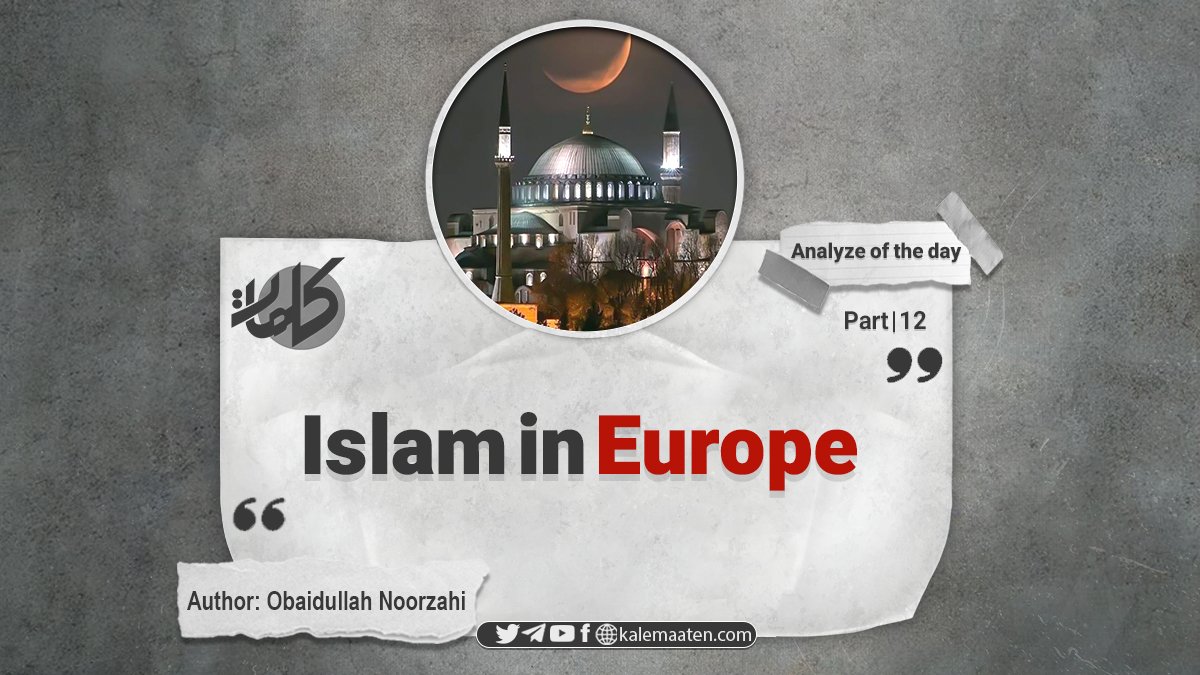
Author: Obaidullah Noorzahi
Islam in Europe (Part 12)
Bulgaria
The Republic of Bulgaria, with an area of 110,994 square kilometers, is located on the shores of the Black Sea, in the eastern part of the Balkan Peninsula. The country is connected to the Asian continent through Turkey and has a population of over 9 million people. Eighty-five percent of the Bulgarian population is of Bulgarian origin, while the rest are of Turkish, Greek, Armenian, and Romani origins.
Bulgaria was under the jurisdiction of the Byzantine Empire since the early 11th century, but in 1393, during the reign of the Ottoman Sultan Bayezid, it became part of the Ottoman state, a rule that continued for five centuries. In 1878, the Bulgarians demanded independence from the Ottomans, which was finally recognized on December 31, 1908.
In the middle of the 19th century, 30% of Bulgaria’s population was Muslim, but following independence, violence and pressure against Muslims increased. Especially during the Marxist regime, this violence peaked, and plots were hatched to erase Islamic identity. In 1961, the Bulgarian government forced Muslims to change their Islamic names by adding Bulgarian suffixes. The naming of babies with Islamic names was banned, and performing religious duties, especially in groups, became impossible. Islamic identity was so repressed that Muslims were forced to pray in secret.
Currently, the regime ruling Bulgaria continues to suppress Muslims through various pressures. More than 2 million Muslims live in Bulgaria, most of whom reside in five northeastern provinces and two southeastern provinces near the Greek border. Bulgarian Muslims are mainly of Turkic origin and have a history in the country dating back four centuries.
Romania
Romania is located in southeastern Europe, on the western shore of the Black Sea, with an area of 237,500 square kilometers. The country has a population of 23 million, of which 85% are Romanians, while the rest are Hungarians and Romani. Eighty percent are Orthodox Christians, and the remaining population includes Catholics and Muslims.
In the 13th century, Romania was conquered by the Mongols, and in the 15th century, parts of it came under the rule of the Ottoman Empire. During the Russo-Ottoman War (1828-1829), the regions of Moldavia and Wallachia, which were then under Ottoman control, came under Russian dominion.
Before World War II, Romania’s Muslim population was 260,000; however, following border changes and pressure from Nazi Germany, this number decreased sharply. Currently, about 70,000 Muslims live in Romania, mainly Turks and Tatars.
The socialist government of Romania imposed many restrictions on Muslims, from the seizure of Islamic publications to the closure of mosques and the ban on preaching activities. Despite these pressures, Muslims in cities such as Constanta and Bucharest have attempted to maintain their Islamic identity through religious and cultural meetings.
Hungary
The Republic of Hungary, with an area of 93,032 square kilometers, is located in Eastern Europe and is landlocked. The country has 19 provinces and four autonomous urban areas. Its capital, Budapest, is divided into two parts, Buda and Pest, by the Danube River. Hungary has a population of approximately 10.5 million, of which 97% are of Hun and Hungarian descent. Fifty-five percent of the population is Catholic, while the rest practice other religions, including Islam.
In 1377, the Ottoman government invaded Hungary, and after numerous defeats of the Hungarians, in 1526, the country was annexed by the Ottoman Empire. During the two centuries of Ottoman rule, some Hungarians converted to Islam, and Turkish and Arab immigrants increased the Muslim population.
After the end of the Ottoman wars, Hungary gradually came under the influence of the Austrian Empire. During this period, many Muslims were severely oppressed, resulting in a decline in their population.
Today, Hungary has about 13,000 Muslims, most of whom are immigrants from Africa, Turkey, Arab countries, Pakistan, and Bangladesh. Since the fall of communism, Muslims have enjoyed greater freedom, and the Hungarian Foreign Minister declared that the Hungarian nation intended to utilize clergy to cleanse society of the traces of violence and Marxist extremism.
Czechoslovakia
Czechoslovakia is located between Russia and Germany, geographically extending in a longitudinal direction. The country has an area of 127,869 square kilometers, and its capital is Prague, located in the northwest. Sixty-five percent of the population is of Czech ethnicity, while 35% are Slovak. The population of Czechoslovakia is estimated at 15.5 million, the majority of whom are Catholics, with a minority of Protestants and Muslims, though the number of Muslims is less than 1% of the total population.
Poland
Poland is located in Eastern Europe, south of the Baltic Sea. The country consists of 49 provinces and three city-counties, with its capital in Warsaw. Poland has an area of 312,683 square kilometers and a population of about 38 million. Ninety-eight percent of the Polish population is of Polish ethnicity (Slavic), with most being Catholic, alongside a minority of Orthodox and Muslim individuals.
In 1440, during the reign of Władysław III, Poland witnessed battles between Ottoman and Polish forces. In these battles, Muslims inflicted heavy defeats on Polish forces, and Władysław III was even killed in one of them. The 16th century saw continued conflicts between Poland and the Ottomans. In 1673, Polish general Jan Sobieski defeated Ottoman forces, and in 1683, Polish forces triumphed over the Ottomans at Vienna.
Polish Muslims are the descendants of those who lived in Poland during the Ottoman Empire. Before World War II, the situation of Polish Muslims was relatively favorable, with an estimated population of around 100,000. However, with the outbreak of the war and subsequent border changes, this number significantly decreased. Currently, there are around 25,000 Muslims in Poland, most of whom are Tatars, a group that has been settled in northeastern Poland for about three centuries.
In 1990, the Islamic Party of Poland was founded, and a mosque was opened in the city of Gdańsk. These measures greatly helped to organize Muslims in the country.
Continues…


